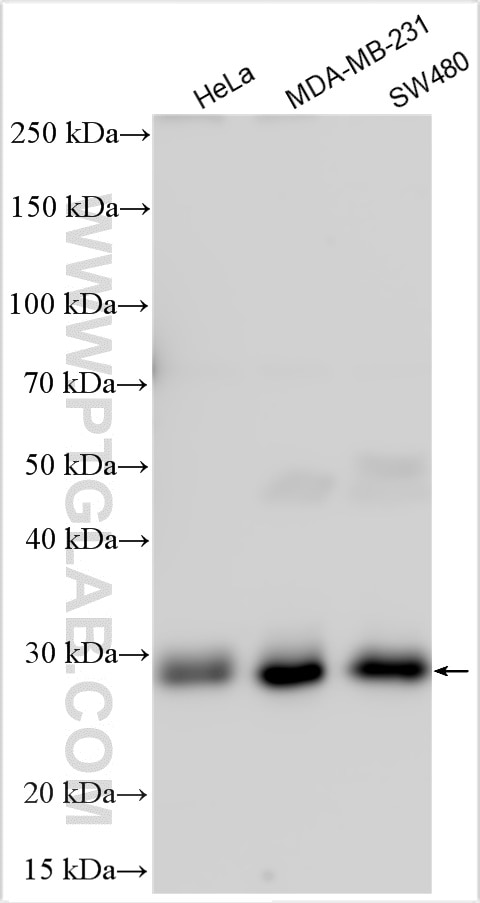Anticorps Polyclonal de lapin anti-ULBP3
ULBP3 Polyclonal Antibody for WB, ELISA
Hôte / Isotype
Lapin / IgG
Réactivité testée
Humain
Applications
WB, ELISA
Conjugaison
Non conjugué
N° de cat : 30058-1-AP
Synonymes
Galerie de données de validation
Applications testées
| Résultats positifs en WB | cellules HeLa, cellules MDA-MB-231, cellules SW480 |
Dilution recommandée
| Application | Dilution |
|---|---|
| Western Blot (WB) | WB : 1:1000-1:6000 |
| It is recommended that this reagent should be titrated in each testing system to obtain optimal results. | |
| Sample-dependent, check data in validation data gallery | |
Informations sur le produit
30058-1-AP cible ULBP3 dans les applications de WB, ELISA et montre une réactivité avec des échantillons Humain
| Réactivité | Humain |
| Hôte / Isotype | Lapin / IgG |
| Clonalité | Polyclonal |
| Type | Anticorps |
| Immunogène | ULBP3 Protéine recombinante Ag32424 |
| Nom complet | UL16 binding protein 3 |
| Masse moléculaire calculée | 28 kDa |
| Poids moléculaire observé | 28 kDa |
| Symbole du gène | ULBP3 |
| Identification du gène (NCBI) | 79465 |
| Conjugaison | Non conjugué |
| Forme | Liquide |
| Méthode de purification | Purification par affinité contre l'antigène |
| Tampon de stockage | PBS with 0.02% sodium azide and 50% glycerol |
| Conditions de stockage | Stocker à -20°C. Stable pendant un an après l'expédition. L'aliquotage n'est pas nécessaire pour le stockage à -20oC Les 20ul contiennent 0,1% de BSA. |
Informations générales
ULBP3 (UL16 binding protein-3), a class 1 major histocompatibility complex-like (MHC-like) molecule and member of the family of ligands of the killer cell lectin-like receptor subfamily K member 1 (NKG2D) (PMID:31292299). ULBP3 are expressed at the cell surface of multiple types of cells and tissues as a glycosylphosphatidylinositol (GPI)-linked proteins (PMID:22741585).
Protocole
| Product Specific Protocols | |
|---|---|
| WB protocol for ULBP3 antibody 30058-1-AP | Download protocol |
| Standard Protocols | |
|---|---|
| Click here to view our Standard Protocols |


